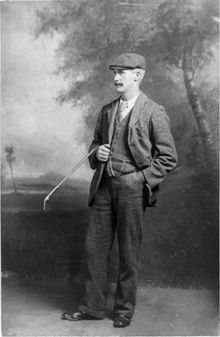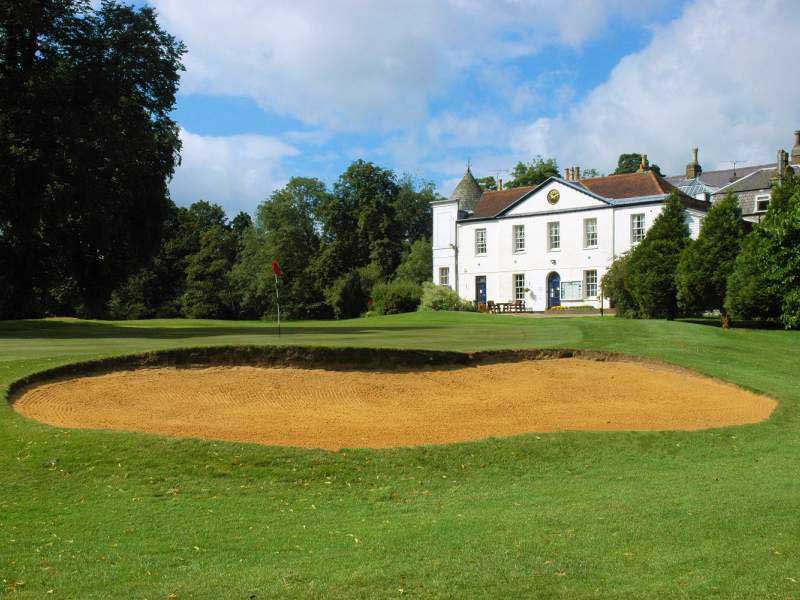 John Henry “J.H.” Taylor (19 March 1871 – 10 February 1963) was an English professional golfer and one of the pioneers of the modern game of golf. He was also a significant golf course architect.
John Henry “J.H.” Taylor (19 March 1871 – 10 February 1963) was an English professional golfer and one of the pioneers of the modern game of golf. He was also a significant golf course architect.
Taylor was born in Devon. He was a member of the fabled Great Triumvirate of the sport in his day, along with Harry Vardon and James Braid, and he won The Open Championship five times. Born into a working class family, and orphaned as a boy, he began work as a caddy and labourer at the Royal North Devon Golf Club (also known as Westward Ho!) at the age of eleven. He became a professional golfer at 19, and was employed by the Royal Mid Surrey Golf Club from 1899 until his retirement in 1946.
In 1901, Taylor was a co-founder and the first chairman of the British Professional Golfers’ Association. This was the first association for professional golfers in the world. Bernard Darwin wrote that Taylor “had turned a feckless company into a self-respecting and respected body of men”.

Taylor was a factor in the Open Championship from age 22 in 1893, until age 55, when he tied for 11th place in 1926. His five Open victories all took place before World War I.
Taylor captained the 1933 Great Britain Ryder Cup team to a win over the United States and remains the only captain on either side to have never played in the matches.
Taylor was also involved in designing courses across England including Andover GC in 1907, Heaton Park GC (Manchester) in 1912, Pinner Hill GC (Middlesex) 1927,[1] Axe Cliff GC (Seaton, Devon) in 1920s[2] and Batchwood Hall GC (St Albans) in 1935. He is attributed with being the inventor of the ‘dogleg’ although holes of this form had existed on many courses before Taylor began golf course design (for example #7 at Old Course at St Andrews and #4 at Prestwick Golf Club). He was made an honorary member of the R&A in 1949, and was president of Royal Birkdale, whose course he had designed, in 1957.
Related posts
Cabo del Sol (Ocean Course), Mexico
on Monday 10, MarchCabo del Sol Ocean Course it is one golf golf courses of the famous...
Golf Son Antem East « Blog Justteetimes
on Sunday 14, DecemberGolf Son Antem East « Blog Justteetimes.

